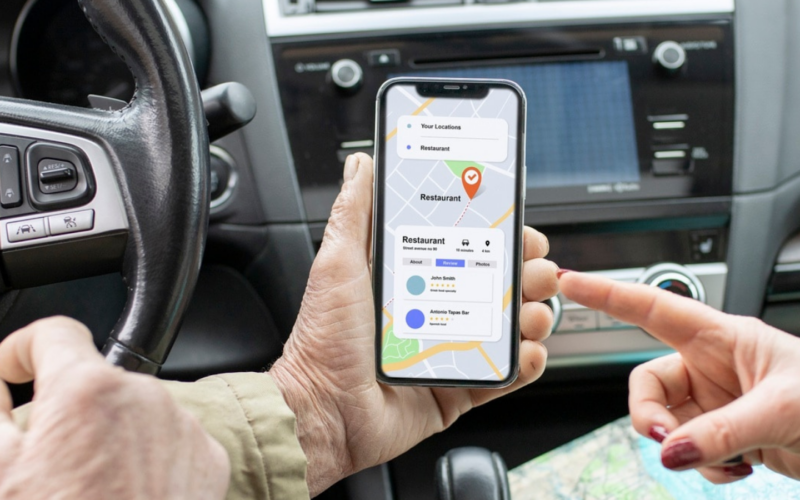Education is an industry that’s seeing tremendous growth, valued at approximately $7.3 trillion in 2025 and expected to reach $10 trillion by 2030. With this expansion, businesses in the education space are facing increasing pressure to make learning accessible for all.
If you’re part of this industry, you know how difficult it can be to bridge the gap between technology and inclusive learning.
In this article, you’ll look at key global trends in the education industry and how businesses can adapt to capitalize on emerging opportunities.
Key Takeaways
- Tech in Education: Technology is revolutionizing education with AI, smart classrooms, and personalized learning, making it more efficient and engaging for students and educators alike.
- Trends in Education: Key global trends like hybrid learning, lifelong education, and data-driven decisions are shaping the future of education and driving businesses to innovate.
- Inclusivity in Education: Ensuring accessible learning environments for all, including those with disabilities or from underserved communities, is a critical focus for businesses in the education sector.
- Codewave: Codewave offers AI-powered solutions tailored to the education industry, helping businesses create personalized, scalable, and accessible learning experiences that drive better outcomes.
Technological Integration in Education
The global EdTech market was valued at approximately $163.49 billion in 2024 and is projected to grow to $348.41 billion by 2030, at a CAGR of 13.3%, driven by AI, personalized learning, and greater internet access.
From smart classrooms to AI-driven learning platforms, the options are endless, but so are the challenges. Businesses must keep pace with these tech shifts to stay relevant.
Here’s how technology is changing the education game and what you can do to stay ahead:
1. AI-Powered Learning Platforms:
AI is making personalized learning easier. Platforms like Duolingo use AI to adjust lessons based on your progress, creating a tailored experience.
Start integrating AI into your offerings to create adaptive learning experiences that meet individual student needs.
2. Smart Classrooms:
Interactive whiteboards and cloud-based tools like Google Classroom are changing how teachers and students interact. These tools let educators track progress in real-time and offer instant feedback.
Ensure your educational products are compatible with smart classroom technologies and improve collaboration between educators and students.
3. Online Learning and Accessibility:
With better internet access, online learning has surged. Coursera and Khan Academy are prime examples of how digital platforms can reach learners worldwide.
Focus on creating scalable, accessible online learning solutions that cater to a global audience, ensuring they work in areas with varying internet speeds.
4. Virtual and Augmented Reality:
Tools like Oculus are taking students on virtual field trips, allowing them to explore historical sites or scientific phenomena up close. These technologies make abstract concepts tangible.
Invest in VR/AR technology to offer immersive, interactive experiences that enhance engagement and understanding for learners.
Ready to embrace AI in education? Explore Codewave’s AI/ML Development Services to create personalized, scalable learning experiences that engage students and drive better outcomes. Start transforming education with AI today!
As technology continues to reshape how we learn, it’s essential to stay informed about the broader trends driving this transformation.
Global Trends in Education
From the rise of hybrid learning models to the demand for lifelong education, these trends are shaping how businesses, institutions, and learners interact. As education is an industry that’s expanding at an unprecedented rate, staying ahead of these trends is crucial for anyone looking to make an impact.
Below are the most significant global shifts and how businesses can adapt:
Trend 1: Hybrid and Remote Learning
The hybrid model combines in-person and online learning, offering flexibility and catering to diverse learning preferences.
The University of California, Berkeley, adopted a hybrid learning model during the pandemic and continues to use it. Students can attend classes virtually or in person, depending on their needs, making education more accessible to both local and international learners.
Why is it Gaining Traction?
- Demand for remote learning grew during the pandemic and continues to be a preferred model for many learners and institutions.
- Hybrid models offer flexibility, making it easier for students to balance education with other commitments.
- Institutions can reach a broader audience, including international students and those in remote locations.
What businesses can do:
- Develop platforms that seamlessly integrate online and in-person learning experiences.
- Provide tools to enhance engagement in hybrid environments, such as virtual labs or interactive features.
- Focus on creating scalable solutions that help institutions manage and optimize hybrid learning models efficiently.
Trend 2: Lifelong Learning and Reskilling
As industries evolve and new technologies emerge, the need for continuous education has never been greater. Lifelong learning and reskilling are becoming essential for both individuals and businesses to stay competitive in the workforce.
Amazon has launched the “Amazon Upskilling” initiative, providing employees with access to free training and education in high-demand areas such as cloud computing, machine learning, and IT support.
Why is it Gaining Traction?
- Rapid technological advancements are changing job requirements, making it essential to upskill regularly.
- More companies are recognizing the need to invest in their workforce to stay competitive.
- Individuals are seeking career advancement opportunities and looking for ways to acquire new skills.
What businesses can do:
- Offer training platforms or certifications that help individuals acquire new skills or enhance existing ones.
- Partner with organizations to provide reskilling programs tailored to industry needs.
- Invest in creating scalable solutions for businesses to easily train and upskill employees, ensuring a future-ready workforce.
Trend 3: Data-Driven Decision-Making
With the increasing availability of data, education institutions and businesses are leveraging analytics to enhance student outcomes, optimize teaching methods, and streamline operations.
Georgia State University used data analytics to identify at-risk students and provide targeted interventions. By analyzing patterns in student behavior, they improved retention rates and graduation success by offering personalized support at critical stages in the academic journey.
Why is it Gaining Traction?
- Data allows institutions to make informed decisions about curriculum development, student engagement, and resource allocation.
- It helps predict student outcomes, enabling timely interventions and tailored learning experiences.
- With better access to real-time data, institutions can improve overall efficiency and effectiveness in education delivery.
What businesses can do:
- Develop and provide data analytics tools that allow educational institutions to track and improve student performance.
- Offer predictive analytics solutions that help educators identify trends and intervene before problems arise.
- Build platforms that integrate data from multiple sources (grades, engagement, attendance) to provide a comprehensive view of student progress.
Looking to use data in education? Explore Codewave’s Data Analytics Development services to generate actionable insights that improve student performance, optimize learning strategies, and drive informed decision-making. Start today!
Trend 4: Competency-Based Education (CBE)
Competency-Based Education focuses on students mastering specific skills or knowledge before moving forward, rather than following a traditional time-based schedule. This approach ensures that learners progress at their own pace, allowing for more personalized and efficient learning paths.
Why is it Gaining Traction?
- CBE ensures students gain practical skills that directly align with industry requirements.
- It offers a flexible pace, reducing the time and cost needed to complete a degree or certification.
- Businesses are increasingly looking for skills-based training rather than traditional degrees, pushing institutions to adopt CBE.
What businesses can do:
- Create learning platforms or certifications that allow for competency-based progression, focusing on real-world skills.
- Work with institutions to integrate CBE models into their curriculum offerings, making education more aligned with current workforce demands.
- Provide tools that help track and assess competencies in real-time, ensuring students can move through programs when they truly master the material.
Trend 5: Gamification and Interactive Learning
Gamification and interactive learning are transforming how students engage with content by adding game-like elements and interactivity, making learning more enjoyable and effective.
Duolingo, a language-learning app, uses gamification to motivate learners by rewarding them with points, badges, and streaks. This approach keeps users engaged and turns learning into a fun, competitive experience, boosting retention and long-term progress.
Why is it Gaining Traction?
- Gamification increases engagement, making learning more enjoyable and less tedious.
- It encourages consistent participation by offering rewards and real-time feedback.
- Interactive learning helps students retain information better through hands-on experiences.
What businesses can do:
- Integrate gamified elements into learning platforms, such as badges, leaderboards, or rewards, to boost user motivation.
- Develop interactive learning modules, like quizzes or challenges, that reinforce key concepts and improve learner retention.
- Partner with educational institutions to provide customized gamified solutions that enhance student engagement and performance.
While technology continues to shape how we learn, ensuring that education remains accessible to all is just as crucial.
Inclusivity and Accessibility in Education
As education moves online, making it accessible to all learners is critical. Inclusivity isn’t just about compliance; it’s about ensuring every student can succeed. Here’s a look at the key problems and practical solutions for making education more inclusive:
1. The Digital Divide and Limited Access to Technology
Many students in underserved communities, especially in rural or low-income areas, lack access to the necessary devices or reliable internet to participate in online learning.
Solution: Develop affordable, scalable tech solutions to bridge this gap. Businesses can partner with governments or NGOs to provide devices and internet access to these communities, ensuring equal opportunities for education.
2. Lack of Assistive Technologies for Diverse Learners
Students with disabilities often face significant barriers due to the absence of tools that support their learning needs, such as screen readers or voice-activated software.
Solution: Integrate assistive technologies like text-to-speech, screen readers, and customizable platforms into digital tools. Businesses can create or partner with platforms that offer these features to ensure learning is accessible to all.
3. Curriculum Not Tailored to Diverse Learning Needs
Traditional curricula often fail to accommodate the various learning styles, abilities, and cultural backgrounds of students, leading to disengagement.
Solution: Implement Universal Design for Learning (UDL) principles to create flexible, adaptable curricula. Businesses can offer solutions that help institutions adopt UDL frameworks, creating more inclusive learning environments.
4. Compliance and Regulatory Challenges in Meeting Accessibility Standards
Educational institutions may struggle to comply with international accessibility standards, such as WCAG, leaving them at risk of exclusion or legal issues.
Solution: Design products and services that align with global accessibility standards. Businesses can help institutions by providing tools and training to ensure compliance with regulations, reducing the risk of exclusion.
5. Insufficient Teacher Training on Inclusive Practices
Many educators are not fully trained on inclusive teaching methods, which can prevent them from addressing the diverse needs of their students effectively.
Solution: Provide ongoing professional development for educators on inclusive strategies and assistive technologies. Businesses can offer training programs, workshops, or platforms to support teachers in adapting their methods to be more inclusive.
6. Limited Engagement with Marginalized or Underserved Groups
Marginalized groups, including students in remote areas or from disadvantaged backgrounds, often lack access to quality education or feel disconnected from the system.
Solution: Develop outreach programs and scholarship opportunities to ensure that marginalized groups can access quality education. Businesses can create partnerships or offer resources that support these groups, ensuring they are not left behind in the learning process.
Discover the powerful potential of AI in education and how its innovative applications are transforming learning experiences, student engagement, and educational outcomes.
Stay adaptable, invest in educator training, and align your products with the evolving needs of the education market.
Why Choose Codewave for Education AI Solutions?
When your education business is ready to adopt AI, you need more than just a one-size-fits-all solution. At Codewave, we go beyond generic tools by turning your vision into AI-powered education systems that are personalized, scalable, and learner-focused.
Curious how Codewave can power your next education AI project? Check out our portfolio to see how we’ve built personalized learning platforms, adaptive content delivery systems, and student performance analytics for clients.
What You Get with Codewave’s AI in Education Solutions
- 60% Improvement in Learning Efficiency: Streamlines curriculum delivery, providing faster, more personalized learning experiences for students.
- 3x Faster Deployment: Brings AI-driven education solutions from concept to implementation in record time.
- Save Up to 3 Hours Weekly: Automates administrative tasks, freeing up time for educators to focus on teaching.
- 25% Lower Costs: Uses smart automation to reduce development costs while maintaining high-quality learning outcomes.
Our Services Include:
- AI Strategy Consultation: We assess your current education goals and craft a customized AI roadmap that enhances learning outcomes, ensuring scalability and long-term impact.
- AI Solution Design & Development: From concept to deployment, we create AI-driven tools for personalized learning, adaptive assessments, and student engagement.
- Integration with Learning Management Systems: We seamlessly connect AI solutions with existing LMS, data platforms, and digital tools to enable smooth, real-time access to learning data.
- Interactive Dashboards & Analytics: We provide intuitive dashboards that turn AI insights into actionable steps, helping educational institutions track performance and make data-driven decisions.
Curious to see what your data is really capable of? Book a session with Codewave’s experts and discover how we can turn your data into real results.
FAQs
Q. How can AI help education businesses improve student engagement?
A. AI can enhance student engagement by personalizing the learning experience to meet individual needs. It allows for real-time data collection, helping educators identify which students need additional support. For example, AI tools can adapt the difficulty of exercises based on a student’s progress. As education is an industry rapidly embracing technology, AI is becoming essential for creating interactive and engaging learning environments.
Q. What role does data play in improving education quality through AI?
A. Data is crucial in AI-driven education solutions because it helps track student performance, engagement, and areas where students may struggle. By analyzing this data, AI can recommend personalized learning paths and improve decision-making. Since education is an industry increasingly relying on data, integrating AI tools that leverage real-time analytics allows for targeted interventions and more effective teaching methods.
Q. How can businesses in the education sector ensure AI solutions are accessible to all learners?
A. Accessibility can be improved by integrating assistive technologies into AI tools, such as text-to-speech and voice recognition. This helps ensure that students with disabilities have equal opportunities to learn. As education is an industry committed to inclusivity, businesses must ensure their AI solutions are designed to meet the needs of diverse learners, including those with special learning needs or from underprivileged backgrounds.
Q. Will AI replace traditional teaching methods in the classroom?
A. AI is not meant to replace teachers but to enhance their ability to provide personalized learning experiences. AI can handle routine tasks, leaving educators more time for one-on-one interactions with students. Education is an industry where AI can support teachers by automating administrative work, giving them the freedom to focus on what matters most—helping students learn and grow.
Q. How can educational institutions integrate AI with existing learning management systems (LMS)?
A. AI can be integrated with LMS by using APIs that allow AI tools to pull and analyze data from existing platforms. This integration enhances the functionality of the LMS, offering personalized learning experiences, predictive analytics, and performance tracking. Education is an industry where seamless integration between AI solutions and LMS ensures a smoother transition and more efficient use of resources.
Q. What are the privacy concerns when using AI in education, and how can they be addressed?
A. Privacy concerns include the collection of sensitive student data and ensuring it’s used responsibly. To address this, AI solutions must comply with data protection regulations like GDPR. Education is an industry where protecting student data is critical, and businesses must implement secure data encryption, anonymize data, and obtain consent to ensure privacy and security in AI applications.
Codewave is a UX first design thinking & digital transformation services company, designing & engineering innovative mobile apps, cloud, & edge solutions.







